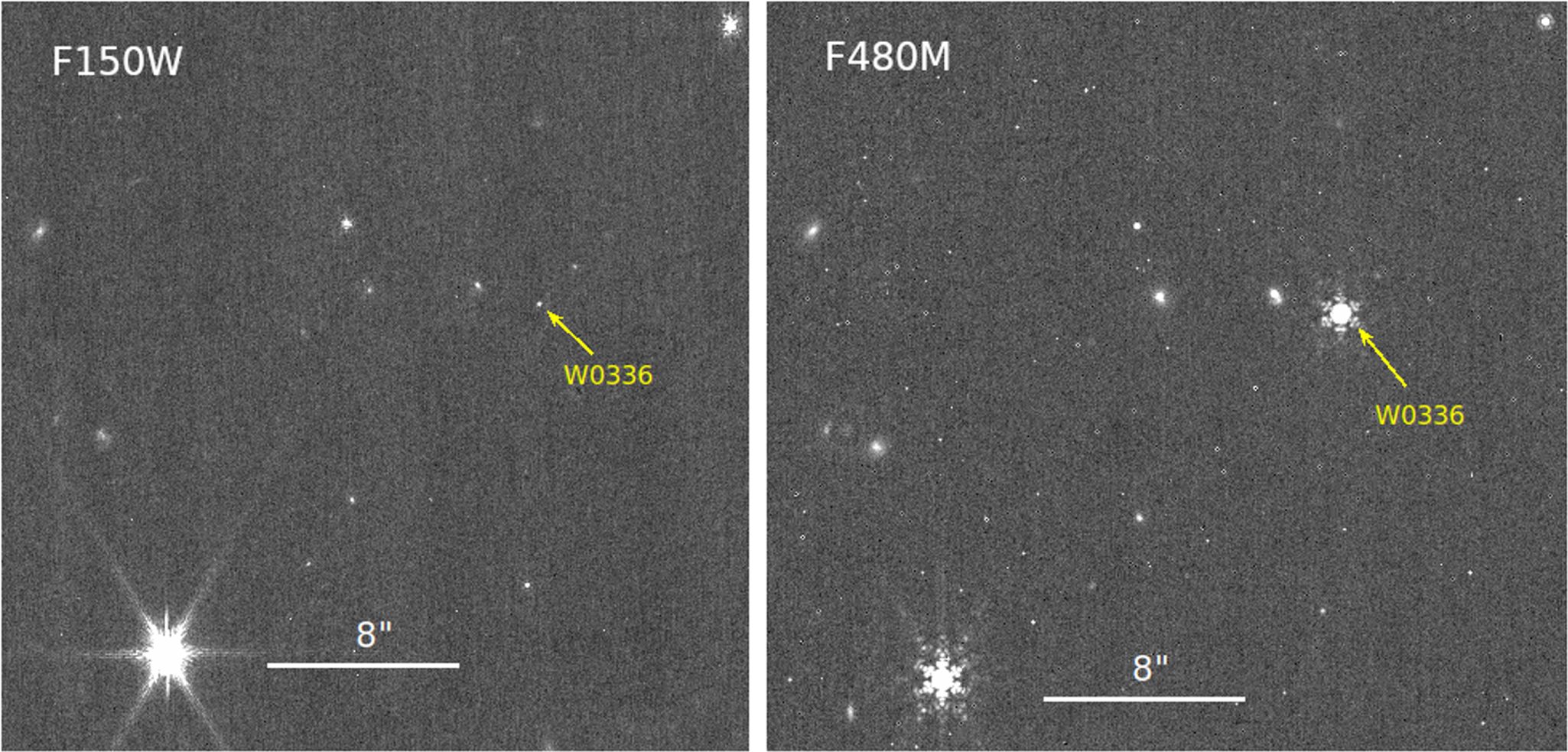First Y+Y Brown Dwarf Binary System Unveiled by JWST

In a groundbreaking discovery, astronomers have identified the first-ever binary system consisting of two Y dwarfs, using the Near Infrared Camera (NIRCam) aboard the James Webb Space Telescope (JWST). This extraordinary finding sheds light on the formation mechanisms of these enigmatic objects and offers valuable insights into the nature of substellar companions, celestial objects less massive than stars (such as planets or brown dwarfs) found orbiting a star.
The study, led by a team of researchers from the University of Michigan and at iREx at the Université de Montréal, was published in Astrophysical Journal Letters in April 2023. The team employed state-of-the-art techniques to observe and analyse the binary system with a Y dwarf primary named WISE J033605.05−014350.4, or simply W0336. These data were part of iREx Researcher Loïc Albert’s Cycle 1 General Observers (GO) program named “Multiplicity Survey of 20 Y Dwarfs with NIRCam Kernel Phase Interferometry”. For this program, Albert and his colleagues were given nearly 42 hours of observing time on the NIRCam instrument in its imaging mode.
Brown dwarfs are celestial objects with masses larger than a giant gas planet’s, but lower than what is needed to cause the hydrogen fusion necessary to ignite the heart of a star. Brown dwarfs are thus typically found with masses between 13 and 80 times that of Jupiter. Y dwarfs in particular are a class of brown dwarfs that occupy a unique region in the temperature range, with effective temperatures lower than 500 K (or 227 degrees Celsius), making them significantly cooler than other populations of brown dwarfs.

JWST/NIRCam images in the F150W and F480M filters showing the observed primary Y dwarf W0336. (Credit: Calissendorff et al. 2023)
Using JWST’s NIRCam instrument to image the Y dwarf W0336, the discovery team were able to identify a companion, also a Y dwarf, approximately 1 astronomical unit (AU) away, which is the distance between the Earth and the Sun. The binary system is located 33 lightyears away. The primary Y dwarf W0336’s temperature was estimated to be 415 K, while the companion has a temperature of 325 K (52 degrees Celsius) which is similar to Earth’s temperature.
Further analysis using evolutionary models suggested that the companion’s mass ranges from 4 to 12.5 times that of Jupiter, while the primary Y dwarf’s mass lies between 7.5 and 20 Jupiter masses. The researchers estimated that the period of this binary system falls within the range of 5 to 9 years.
Brown dwarfs, including Y dwarfs, are intriguing celestial objects that challenge our understanding of star formation processes. Studying the multiplicity of brown dwarfs provides valuable insights into their formation mechanisms. Studying brown dwarfs in binary systems in particular will help astronomers better understand if substellar companions are formed in isolation like stars, in the primary’s disc, like planets, or through another formation mechanism altogether.
“Previous studies of more massive brown dwarfs had shown that most binary brown dwarfs come as twins – both having very similar masses – an outcome best explained by the process of star formation,” explains Loïc Albert, iREx research and NIRISS Instrument Scientist. “We wanted to determine whether that was true for the least massive Y dwarfs, or if planetary formation could occur and produce bodies with vastly different masses. W0336 points to the star-like scenario, but several Y dwarfs remain to be observed.”
With the increasing number of brown dwarf discoveries in the solar neighbourhood, deep imaging surveys and infrared missions such as the Wide-field Infrared Survey Explorer (WISE) have significantly contributed to our understanding and cataloguing of these objects. JWST, with its exceptional sensitivity to longer infrared wavelengths at which Y dwarfs shine more brightly, offers unparalleled opportunities for studying the properties of these intriguing substellar objects in greater detail.
“Nature forms stars over a wide range of masses, from the most massive, over 100 times the mass of the Sun, to the least massive like brown dwarfs, less than 1% that of the Sun. What is so exciting about W0336 is it offers the best opportunity so far to directly measure the masses of the least massive star-like objects known and establish what that minimum lower-end mass is,” exclaims Albert. “For this purpose, we hope to monitor these binary brown dwarfs over the coming years to measure their motion on the sky as they orbit one another.”
About this study
The paper “JWST/NIRCam Discovery of the First Y+Y Brown Dwarf Binary: WISE J033605.05–014350.4” was published in Astrophysical Journal Letters on April 20, 2023. The lead authors Per Calissendorff, Matthew De Furio, and Michael Meyer are based out of the University of Michigan. iREx researchers Loïc Albert, Frédérique Baron, Clémence Fontanive, and Thomas Vandal were contributors to this paper, as well as former iREx Trottier Postdoctoral Fellows Mohamad Ali-Dib and Daniel Thorngren.
Scientific Contact
Loïc Albert
NIRISS Instrument Scientist
Mont-Mégantic Observatory
Université de Montréal
loic.albert@umontreal.ca
Tel. (office): 514 343-6111 ext. 3698
Tel (cell): 438 820-7231
Media Contact
Nathalie Ouellette
JWST Outreach Scientist
Mont-Mégantic Observatory
Université de Montréal
nathalie@astro.umontreal.ca
Tel.: 613 531-1762


